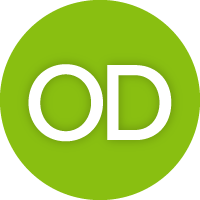Abstract Session
Vasculitis
Session: Abstracts: Vasculitis – ANCA-Associated I (0853–0858)
0856: Dupilumab for Relapsing or Refractory Eosinophilic Granulomatosis with Polyangiitis: A European Retrospective Study
Sunday, November 12, 2023
4:45 PM - 4:55 PM PT
Location: Ballroom 20D
- BM
Presenting Author(s)
Berengere Molina1, Roberto Padoan2, Maria Letizia Urban3, Pavel Novikov4, Marco Caminati5, Camille Taillé6, Antoine Néel7, Laurence Bouillet8, Paolo Fraticelli9, Nicolas Schleinitz10, Christine Christides11, Laura Moi12, Bertrand Godeau13, Ann Knight14, Jan Walter Schroeder15, Sylvain Marchand-Adam16, Helder Gil17, Vincent Cottin18, Cécile-Audrey Durel19, Elena Gelain20, Boris Lerais21, Marc Ruivard22, Matthieu Groh23, Maxime Samson24, Luca Moroni25, Jens Thiel26, Anna Kernder27, Jan Willem Cohen Tervaert28, Giulia Costanzo29, Marco Folci30, Sonia Rizzello31, Pascal Cohen32, Giacomo Emmi33 and Benjamin Terrier34, 1Cochin Hospital, Paris, France, 2Department of Medicine DIMED, University of Padova, Padova, Italy, 3Department of Experimental and Clinical Medicine, University of Florence, Florence, Italy, 4Sechenov First Moscow State Medical University, Moscow, Russia, 5University of Verona, Verona, Italy, 6AP-HP, Bichat Hospital, Reference Center for Rare Pulmonary Diseases and University of Paris Cité, Inserm 1152, Paris, France, 7CHU Nantes, Nantes, France, 8Internal medicine department, Grenoble University Hospital, Grenoble, France, 9University Hospital Ospedali Riuniti, Ancona, Italy, 10Aix Marseille university, AP-HM, Marseille, France, 11Avignon Hospital, Avignon, France, 12Valais Hospital, Sion, Switzerland, 13CHU Henri Mondor, Créteil, France, 14Uppsala University, Uppsala, Sweden, 15ASST Grande Ospedale Metropolitano Niguarda, Milan, Italy, 16CHRU Tours, service de pneumologie et d'explorations fonctionnelles respiratoires, Tours, France, 17CHU Besancon, Besançon, France, 18Coordinating Reference Center for Rare Pulmonary Diseases, Louis Pradel Hospital, University of Lyon, INRAE, Lyon, France, 19CHU Lyon, Lyon, France, 20Meyer Children's Hospital, Florence, Italy, 21Brest University Hospital, Brest, France, 22CHU Clermont Ferrand, Clermont Ferrand, France, 23National Referral Center for Hypereosinophilic Syndrome (CEREO), Hôpital Foch, Suresnes, France, 24Department of Internal Medicine and Clinical Immunology, Dijon University Hospital, Dijon, France, 25San Raffaele Scientific Institute, Milan, Italy, 26University Hospital Freiburg, Freiburg, Germany, 27Heinrich-Heine-University Düsseldorf, Dusseldorf, Germany, 28University of Alberta, Edmonton, AB, Canada, 29University of Cagliari, Monserrato, Italy, 30Fondazione Poliambulanza Istituto Ospedaliero, Brescia, Italy, 31Careggi University Hospital, Florence, Italy, 32CHU Cochin, Paris, France, 33University of Florence, Florence, Italy, 34Department of Internal Medicine, Hôpital Cochin, AP-HP, Paris, France
Background/Purpose: Eosinophilic granulomatosis with polyangiitis (EGPA) is an ANCA-associated vasculitides characterized by asthma, blood and tissue eosinophilia and systemic manifestations. Glucocorticoids (GCs)-dependent asthma and/or disabling ear, nose and throat (ENT) symptoms may persist in half of the patients. Mepolizumab represent an important strategy in these situations. Nevertheless, some patients may show poor or dissociated response between asthma and ENT involvement, requiring alternative options. Dupilumab, a monoclonal antibody directed against the IL-4/IL-13 receptor, has been approved for the treatment of eosinophilic asthma and chronic rhinosinusitis with nasal polyposis, raising the question of its efficacy and its tolerance in EGPA. We aimed to describe the safety and efficacy of the off-label use of dupilumab to treat relapsing and/or refractory EGPA.
Methods: We conducted a European multicenter retrospective study including patients with EGPA fulfilling 2022 ACR/EULAR classification criteria and treated with dupilumab. We collected safety and efficacy data. Response was defined as complete by BVAS=0 and prednisone dose ≤4 mg/day, and partial by BVAS=0 and prednisone dose >4 mg/d
Results: Fifty patients were included, with a median age of 52 years (IQR, 45-57), 29 were women (58%). Dupilumab was initiated for disabling ENT manifestations in 41 (82%) cases, GCs-dependency in 28 (56%) and/or poorly controlled asthma in 27 (54%). Dupilumab was associated with methotrexate in 5, azathioprine in 3, and mycophenolate in 1. Median follow-up after dupilumab initiation was 13.2 (5.4-17.8) months.
Twenty-one patients (42%) achieved a complete response and 12 (24%) a partial response. Median BVAS was 2 (1-4) at dupilumab initiation and dropped to 0 (0-1.5) at 12 months (p=0.01). Baseline prednisone dose was 8 mg/d (5-13.8) and decreased to 2.5 mg/d (0-5) at 12 months (p=0.04).
Seventeen (34%) patients reported adverse events (AE). Main AE were mild-to-moderate and included headache (n=4), injection-site reaction (n=3), myalgia (n=3), arthralgia (n=3). Two patients experienced non-fatal anaphylactic shock. Dupilumab-induced eosinophilia was reported in 33 patients (66%), with a median peak eosinophil count of 1980/mm3 (IQR 560-9800) occurring 13 weeks (IQR 5-18) after starting dupilumab. This dupilumab-induced eosinophilia remained asymptomatic in 42% cases.
Fifteen (30%) patients presented a EGPA flarewhich was associated with blood eosinophilia in 13/15 (87%) cases leading to dupilumab discontinuation in 11 cases (73%), including systemic flares in 7 cases, asthma exacerbation in 6 cases, ENT relapse in 1 and inflammatory arthralgia in 1.
In total, 21 (42%) patients discontinued dupilumab: vasculitis flare (n=11), dupilumab-induced eosinophilia (n=7), anaphylactic shock (n=2), cancer (n=1). No deaths were reported.
Conclusion: These results suggest that dupilumab may be effective in relapsing and/or refractory EGPA, particularly in ENT manifestations. However, dupilumab-induced eosinophilia is common and may remain asymptomatic or be associated with relapse, so caution is warranted.
B. Molina: None; R. Padoan: GlaxoSmithKlein(GSK), 6; M. Urban: None; P. Novikov: None; M. Caminati: None; C. Taillé: AstraZeneca, 6, Chiesi, 5, 6, GSK, 5, 6, Novartis, 5, 6, Sanofi, 6; A. Néel: None; L. Bouillet: None; P. Fraticelli: None; N. Schleinitz: CSL behring, 1, Eusapharma, 6, GSK, 6; C. Christides: None; L. Moi: None; B. Godeau: None; A. Knight: None; J. Schroeder: None; S. Marchand-Adam: None; H. Gil: None; V. Cottin: Boehringer Ingelheim, 2, 5, 6, 12, Support for attending meetings, Celgene/BMS, 1, 2, CSL Behring, 2, Ferrer, 2, 6, 12, Support for attending meetings, FibroGen, 1, Galapagos, 1, 2, Galecto, 1, GlaxoSmithKline, 2, Pliant, 2, Pure Tech, 2, Redx, 2, Roche, 1, 2, 6, 12, Support for attending meetings, Sanofi, 2, Shionogi, 2; C. Durel: None; E. Gelain: None; B. Lerais: None; M. Ruivard: None; M. Groh: AstraZeneca, 6, GSK, 6, Sanofi, 6; M. Samson: ARGENX, 2, Boehringer-Ingelheim, 2, CHUGAI, 2, CSL Vifor, 2, GlaxoSmithKlein(GSK), 2, NOVARTIS, 2, 5; L. Moroni: None; J. Thiel: None; A. Kernder: None; J. Tervaert: None; G. Costanzo: None; M. Folci: None; S. Rizzello: None; P. Cohen: None; G. Emmi: AstraZeneca, 2, Boehringer-Ingelheim, 2, GlaxoSmithKlein(GSK), 2, Novartis, 2, Sanofi, 2, Sobi, 2; B. Terrier: AstraZeneca, 5, CSL Vifor, 2, GlaxoSmithKlein(GSK), 2.
Background/Purpose: Eosinophilic granulomatosis with polyangiitis (EGPA) is an ANCA-associated vasculitides characterized by asthma, blood and tissue eosinophilia and systemic manifestations. Glucocorticoids (GCs)-dependent asthma and/or disabling ear, nose and throat (ENT) symptoms may persist in half of the patients. Mepolizumab represent an important strategy in these situations. Nevertheless, some patients may show poor or dissociated response between asthma and ENT involvement, requiring alternative options. Dupilumab, a monoclonal antibody directed against the IL-4/IL-13 receptor, has been approved for the treatment of eosinophilic asthma and chronic rhinosinusitis with nasal polyposis, raising the question of its efficacy and its tolerance in EGPA. We aimed to describe the safety and efficacy of the off-label use of dupilumab to treat relapsing and/or refractory EGPA.
Methods: We conducted a European multicenter retrospective study including patients with EGPA fulfilling 2022 ACR/EULAR classification criteria and treated with dupilumab. We collected safety and efficacy data. Response was defined as complete by BVAS=0 and prednisone dose ≤4 mg/day, and partial by BVAS=0 and prednisone dose >4 mg/d
Results: Fifty patients were included, with a median age of 52 years (IQR, 45-57), 29 were women (58%). Dupilumab was initiated for disabling ENT manifestations in 41 (82%) cases, GCs-dependency in 28 (56%) and/or poorly controlled asthma in 27 (54%). Dupilumab was associated with methotrexate in 5, azathioprine in 3, and mycophenolate in 1. Median follow-up after dupilumab initiation was 13.2 (5.4-17.8) months.
Twenty-one patients (42%) achieved a complete response and 12 (24%) a partial response. Median BVAS was 2 (1-4) at dupilumab initiation and dropped to 0 (0-1.5) at 12 months (p=0.01). Baseline prednisone dose was 8 mg/d (5-13.8) and decreased to 2.5 mg/d (0-5) at 12 months (p=0.04).
Seventeen (34%) patients reported adverse events (AE). Main AE were mild-to-moderate and included headache (n=4), injection-site reaction (n=3), myalgia (n=3), arthralgia (n=3). Two patients experienced non-fatal anaphylactic shock. Dupilumab-induced eosinophilia was reported in 33 patients (66%), with a median peak eosinophil count of 1980/mm3 (IQR 560-9800) occurring 13 weeks (IQR 5-18) after starting dupilumab. This dupilumab-induced eosinophilia remained asymptomatic in 42% cases.
Fifteen (30%) patients presented a EGPA flarewhich was associated with blood eosinophilia in 13/15 (87%) cases leading to dupilumab discontinuation in 11 cases (73%), including systemic flares in 7 cases, asthma exacerbation in 6 cases, ENT relapse in 1 and inflammatory arthralgia in 1.
In total, 21 (42%) patients discontinued dupilumab: vasculitis flare (n=11), dupilumab-induced eosinophilia (n=7), anaphylactic shock (n=2), cancer (n=1). No deaths were reported.
Conclusion: These results suggest that dupilumab may be effective in relapsing and/or refractory EGPA, particularly in ENT manifestations. However, dupilumab-induced eosinophilia is common and may remain asymptomatic or be associated with relapse, so caution is warranted.
B. Molina: None; R. Padoan: GlaxoSmithKlein(GSK), 6; M. Urban: None; P. Novikov: None; M. Caminati: None; C. Taillé: AstraZeneca, 6, Chiesi, 5, 6, GSK, 5, 6, Novartis, 5, 6, Sanofi, 6; A. Néel: None; L. Bouillet: None; P. Fraticelli: None; N. Schleinitz: CSL behring, 1, Eusapharma, 6, GSK, 6; C. Christides: None; L. Moi: None; B. Godeau: None; A. Knight: None; J. Schroeder: None; S. Marchand-Adam: None; H. Gil: None; V. Cottin: Boehringer Ingelheim, 2, 5, 6, 12, Support for attending meetings, Celgene/BMS, 1, 2, CSL Behring, 2, Ferrer, 2, 6, 12, Support for attending meetings, FibroGen, 1, Galapagos, 1, 2, Galecto, 1, GlaxoSmithKline, 2, Pliant, 2, Pure Tech, 2, Redx, 2, Roche, 1, 2, 6, 12, Support for attending meetings, Sanofi, 2, Shionogi, 2; C. Durel: None; E. Gelain: None; B. Lerais: None; M. Ruivard: None; M. Groh: AstraZeneca, 6, GSK, 6, Sanofi, 6; M. Samson: ARGENX, 2, Boehringer-Ingelheim, 2, CHUGAI, 2, CSL Vifor, 2, GlaxoSmithKlein(GSK), 2, NOVARTIS, 2, 5; L. Moroni: None; J. Thiel: None; A. Kernder: None; J. Tervaert: None; G. Costanzo: None; M. Folci: None; S. Rizzello: None; P. Cohen: None; G. Emmi: AstraZeneca, 2, Boehringer-Ingelheim, 2, GlaxoSmithKlein(GSK), 2, Novartis, 2, Sanofi, 2, Sobi, 2; B. Terrier: AstraZeneca, 5, CSL Vifor, 2, GlaxoSmithKlein(GSK), 2.



